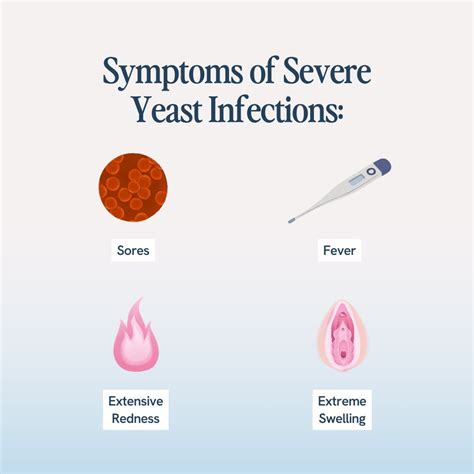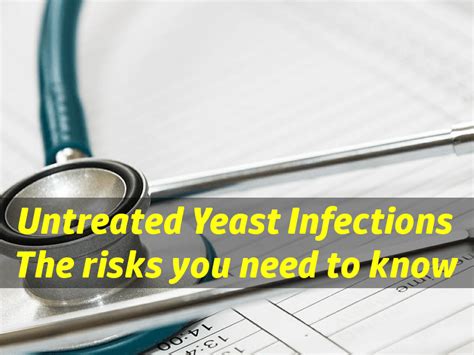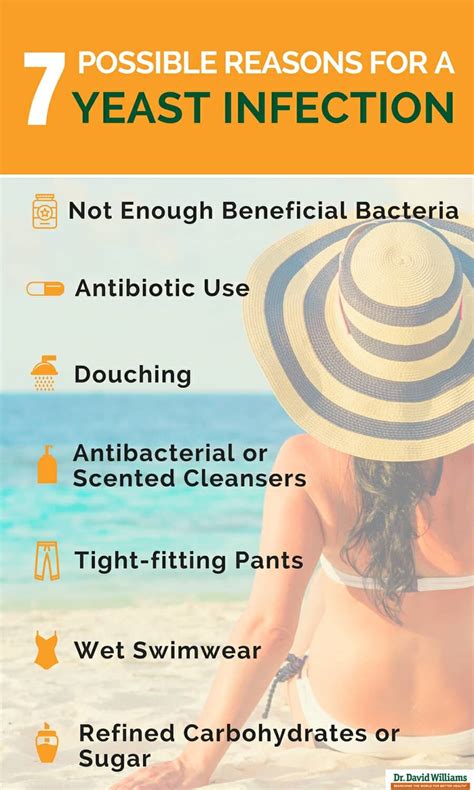Intro
A severe yeast infection can be a debilitating and painful condition that affects millions of people worldwide. Yeast infections occur when the natural balance of bacteria and yeast in the body is disrupted, allowing the yeast to overgrow and cause a range of symptoms. In this article, we will explore the importance of understanding severe yeast infection symptoms, the risks associated with untreated infections, and the various treatment options available.
Yeast infections can affect different parts of the body, including the vagina, mouth, skin, and intestines. The symptoms of a yeast infection can vary depending on the location and severity of the infection. In some cases, yeast infections can be mild and may not require medical attention. However, severe yeast infections can cause significant discomfort, pain, and even long-term health complications if left untreated. It is essential to recognize the symptoms of a severe yeast infection and seek medical attention if necessary.
The severity of yeast infection symptoms can range from mild to severe, and it is crucial to understand the differences between these levels of severity. Mild yeast infections may cause minimal discomfort and can often be treated with over-the-counter medications or home remedies. However, severe yeast infections can cause significant pain, inflammation, and discharge, and may require prescription medications or medical procedures to treat. Understanding the symptoms of a severe yeast infection can help individuals seek medical attention early, reducing the risk of long-term health complications.
Understanding Severe Yeast Infection Symptoms

Common Symptoms of Severe Yeast Infections
Some common symptoms of severe yeast infections include: * Intense itching or burning in the affected area * Redness and inflammation of the skin or mucous membranes * Thick, white, cottage cheese-like discharge * Pain during sex or urination * White patches on the tongue, inside the cheeks, and on the gums * Difficulty swallowing or eating due to pain or discomfort * Abdominal pain or cramping * Fever or chillsRisks Associated with Untreated Yeast Infections

Complications of Untreated Yeast Infections
Some potential complications of untreated yeast infections include: * Spread of the infection to other parts of the body * Long-term damage to the reproductive organs, skin, or mucous membranes * Increased risk of pregnancy complications, such as preterm labor or low birth weight * Increased risk of sexually transmitted infections (STIs) * Sepsis or organ failure in rare casesTreatment Options for Severe Yeast Infections

Prescription Medications for Severe Yeast Infections
Some prescription medications for severe yeast infections include: * Fluconazole (Diflucan) * Itraconazole (Sporanox) * Clotrimazole (Gyne-Lotrimin) * Miconazole (Monistat) * Terconazole (Terazol)Home Remedies for Yeast Infections

Natural Remedies for Yeast Infections
Some natural remedies for yeast infections include: * Tea tree oil * Garlic * Cranberry juice * Apple cider vinegar * Coconut oilPreventing Yeast Infections

Reducing the Risk of Yeast Infections
Some ways to reduce the risk of yeast infections include: * Avoiding antibiotics or steroids that can disrupt the natural balance of bacteria * Managing stress through relaxation techniques, such as meditation or deep breathing * Getting enough sleep and practicing good sleep hygiene * Avoiding irritants, such as scented soaps or bubble baths, that can disrupt the natural balance of bacteriaConclusion and Next Steps

We invite you to share your thoughts and experiences with severe yeast infections in the comments below. If you have any questions or concerns, please do not hesitate to ask. Additionally, we encourage you to share this article with others who may be affected by yeast infections, as awareness and education are key to preventing and managing these infections.
What are the symptoms of a severe yeast infection?
+Severe yeast infection symptoms can include intense itching or burning, redness and inflammation, thick white discharge, and pain during sex or urination.
How can I prevent yeast infections?
+Preventing yeast infections requires maintaining good hygiene, wearing breathable clothing, and avoiding irritants that can disrupt the natural balance of bacteria and yeast.
What are the risks associated with untreated yeast infections?
+Untreated yeast infections can lead to long-term health complications, including the spread of the infection to other parts of the body, long-term damage to the reproductive organs, skin, or mucous membranes, and increased risk of pregnancy complications or STIs.
